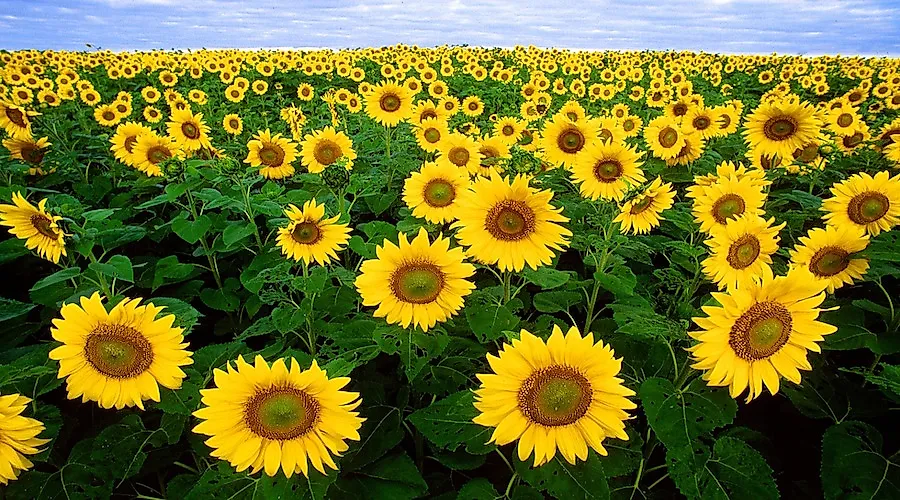The Top Sunflower Seed Producing Countries In The World

Sunflower is an important agricultural crop in most of the sunflower growing countries. It is grown for its edible oil and fruits both for human and livestock consumption. Sunflower plant can either be wild or cultivated. The wild sunflower is widely branched with several flowers while the domesticated sunflower has a single inflorescence or flower head atop of the stem. The plant derived its name from the shape of the flower head which looks like the sun or from the fact that the flower tends to move towards the sun as the sun crosses the sky. It grows to a height of about 5 to 12 feet and has coarsely broad leaves.
Uses Of Sunflower Seed
Roasted sunflower whole seeds are sold as snacks low in cholesterol and sodium. The seeds also improve brain power and digestion. Sunflower seeds can also be processed into sunflower butter which is used as an alternative to peanut butter. Sunflower oil extracted from sunflower seeds is a popular cooking oil used in most kitchens because of its various health benefits. Sunflower oil is rich in Vitamin E; thus it acts as an oxidant. The Vitamin E extracted from sunflower also prevents asthma, arthritis, and colon cancer. The sunflower cake which remains after the seeds have been processed into oil is a nutritious feed for livestock. The Chinese use the fibers from the stem of the sunflower for fabric and paper. The pith is the lightest known substance and is used in scientific laboratories for experiments. In the Netherlands, sunflower has been used to reclaim marshy because of its ability to absorb more water.
Cultivation Of Sunflower
Wild sunflower grow naturally in the wild and adapt to areas of fertile soil. Sunflowers grow best in a fertile and well-drained soil. They thrive in slightly acidic to alkaline with a pH value of between 6.0 and 7.5. Being a heavy feeder, sunflower needs a nutrient-rich soil. It also grows well in areas of direct sunlight and prefers long, hot summer to flower well. Sunflower seeds are planted directly in the soil at a spacing of 1.48 feet and 0.98 feet deep. The spacing is necessary to facilitate the branching out of flowers. The small plants require watering regularly to boost their growth and development. Fertilizer can be used sparingly, especially on soils with low fertility level. Tall species and cultivars require support for a short period to enable the flowers to access adequate sunlight. Birds are a threat to the sunflower; therefore they need to be kept away, or the head of the flowers can be covered using clear bags.
Top Sunflower Seed Producing Countries
Ukraine and Russia remain the top sunflower seed producers in the world. They produce almost half of the world sunflower seeds. Ukraine produced 11 million tons of Sunflower seeds accounting for 24.8% of the world’s production while Russia produced 10.6 million tons in 2013 accounting for 23.7% of the world’s production. Argentina, China, Romania, Bulgaria, and Tanzania are also major producers of sunflower seeds in the world. The world sunflower seed production totaled 44.5 million tons in 2013
The Top Sunflower Seed Producing Countries In The World
| Rank | Country | Production (millions of tonnes) |
|---|---|---|
| 1 | Ukraine | 11.0 |
| 2 | Russia | 10.6 |
| 3 | Argentina | 3.1 |
| 4 | China | 2.4 |
| 5 | Romania | 2.1 |
| 6 | World total | 44.5 |







